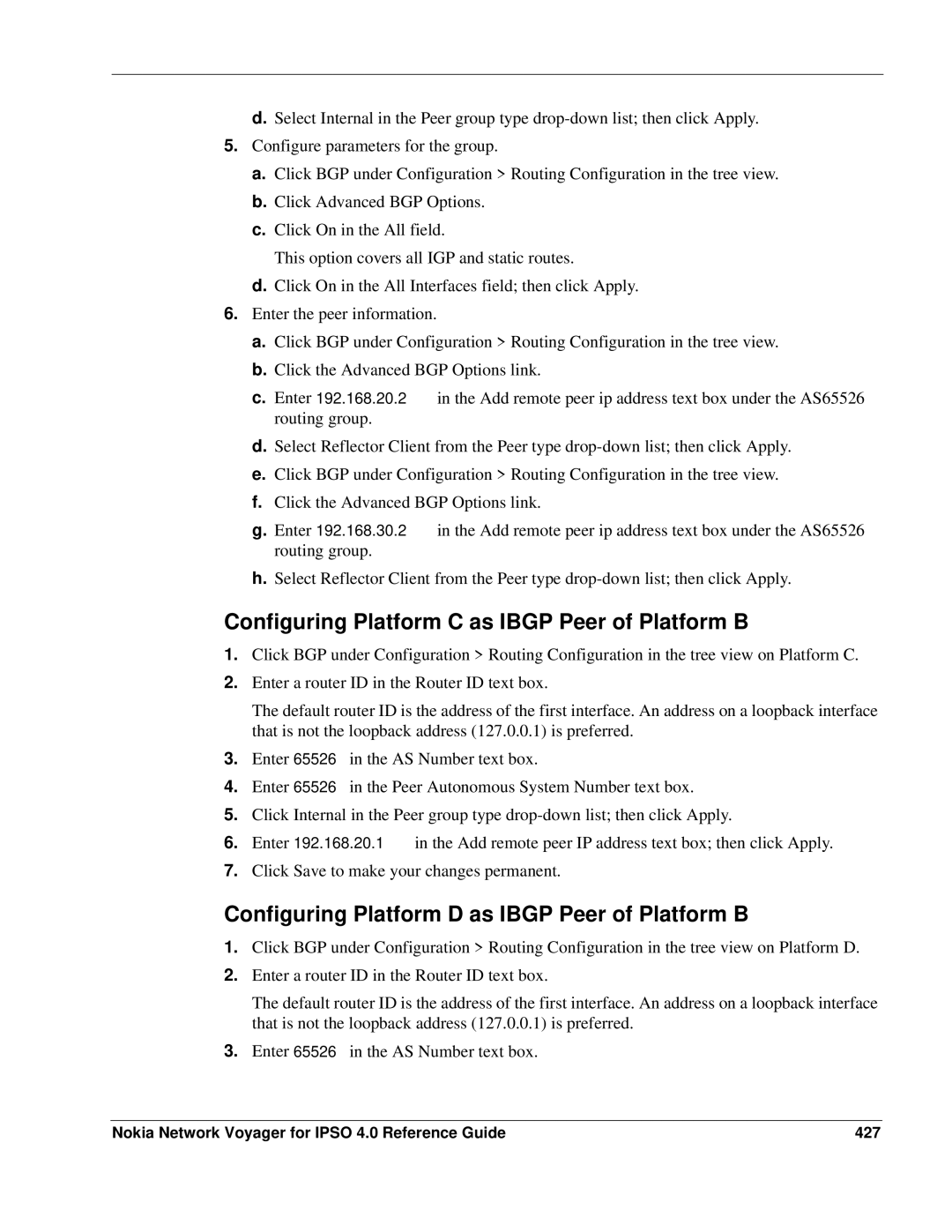
d.Select Internal in the Peer group type
5.Configure parameters for the group.
a.Click BGP under Configuration > Routing Configuration in the tree view.
b.Click Advanced BGP Options.
c.Click On in the All field.
This option covers all IGP and static routes.
d.Click On in the All Interfaces field; then click Apply.
6.Enter the peer information.
a.Click BGP under Configuration > Routing Configuration in the tree view.
b.Click the Advanced BGP Options link.
c.Enter 192.168.20.2 in the Add remote peer ip address text box under the AS65526 routing group.
d.Select Reflector Client from the Peer type
e.Click BGP under Configuration > Routing Configuration in the tree view.
f.Click the Advanced BGP Options link.
g.Enter 192.168.30.2 in the Add remote peer ip address text box under the AS65526 routing group.
h.Select Reflector Client from the Peer type
Configuring Platform C as IBGP Peer of Platform B
1.Click BGP under Configuration > Routing Configuration in the tree view on Platform C.
2.Enter a router ID in the Router ID text box.
The default router ID is the address of the first interface. An address on a loopback interface that is not the loopback address (127.0.0.1) is preferred.
3.Enter 65526 in the AS Number text box.
4.Enter 65526 in the Peer Autonomous System Number text box.
5.Click Internal in the Peer group type
6.Enter 192.168.20.1 in the Add remote peer IP address text box; then click Apply.
7.Click Save to make your changes permanent.
Configuring Platform D as IBGP Peer of Platform B
1.Click BGP under Configuration > Routing Configuration in the tree view on Platform D.
2.Enter a router ID in the Router ID text box.
The default router ID is the address of the first interface. An address on a loopback interface that is not the loopback address (127.0.0.1) is preferred.
3.Enter 65526 in the AS Number text box.
Nokia Network Voyager for IPSO 4.0 Reference Guide | 427 |
